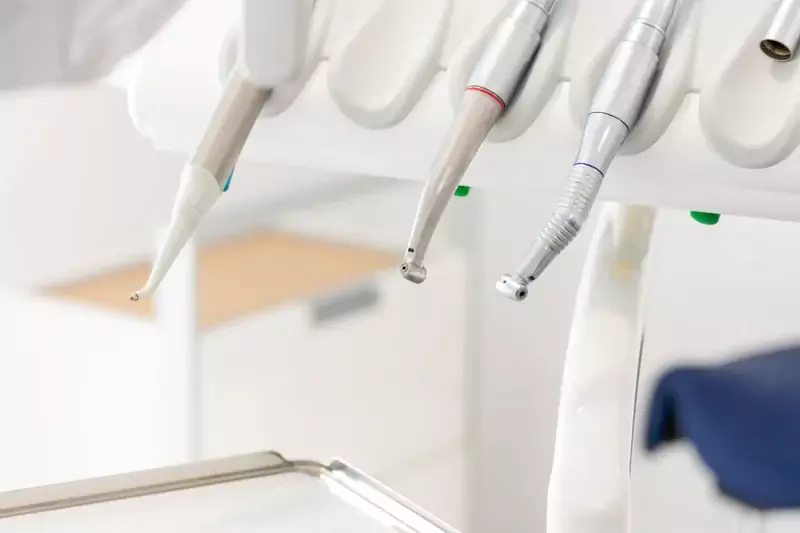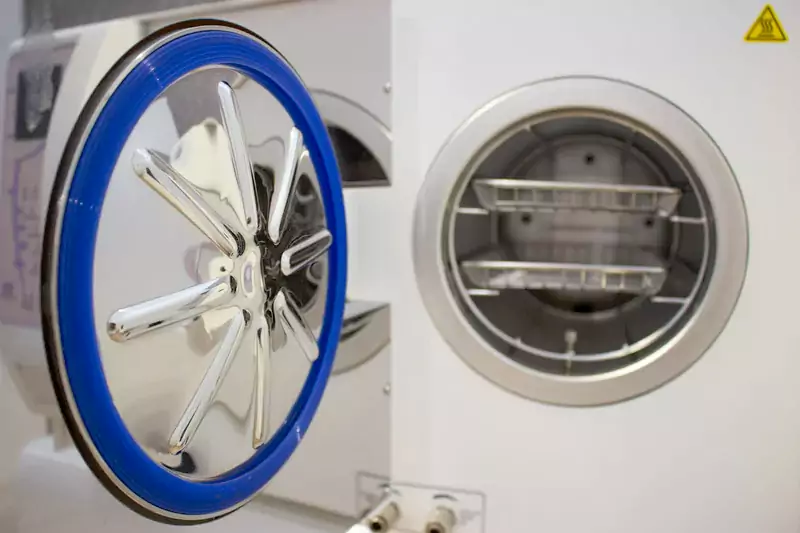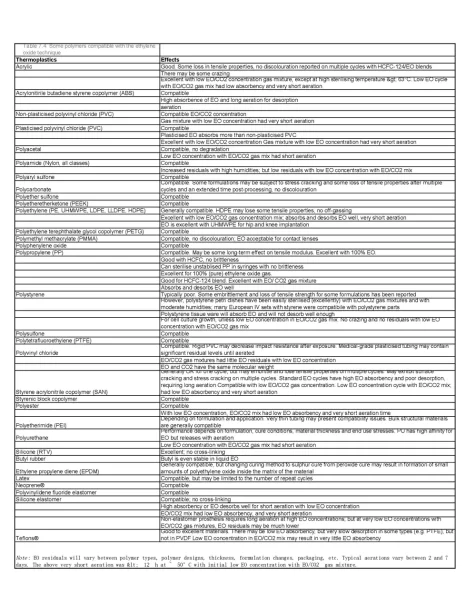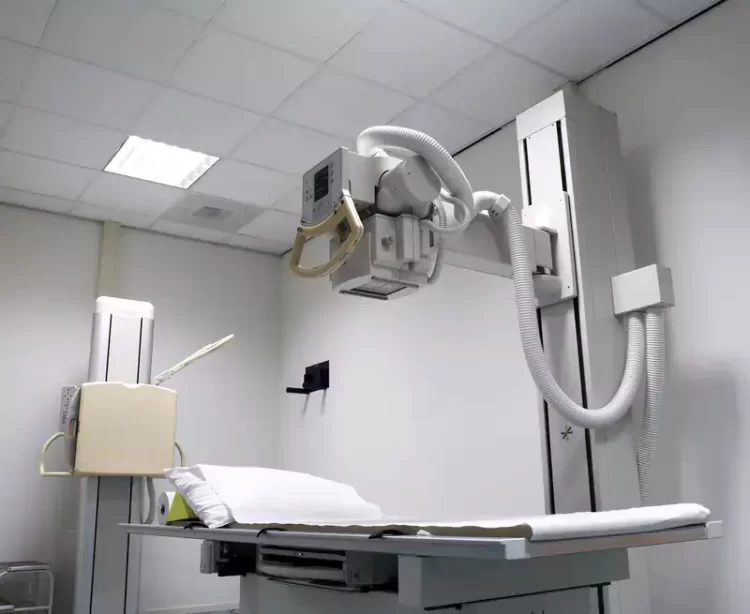Medical CNC Machining: Precision CNC Machining Advancements and Benefits in Medical Applications
Introduction: Exploring the Advancements and Benefits of Medical CNC Machining
The adaptability of CNC machining in the medical field, along with its compatibility with a range of processes and materials, has rendered it highly beneficial for medical manufacturing. This approach enables the faster and more cost-efficient production of medical products.
This article explores the reasons why medical CNC machining is well-suited for your project. Additionally, we will delve into the assortment of materials used in medical machining, aiding you in selecting the most suitable one for your products. Continue reading to discover various strategies for optimizing the production of medical devices using CNC machining.

When should one choose CNC machining for medical components?
The flexibility of CNC machining is high, and it can adapt to batch sizes from one to hundreds of thousands or even millions. The machining accuracy is high, very complex parts can be machined, and the production time is relatively short. A wide range of materials are available for processing. Medical parts have high requirements and harsh material selections and often do not require large batches. Compared with other production processes, CNC machining can better meet the needs of medical part production.
CNC machining for medical parts is normally the most suitable process in the following scenarios.
When the production volume is not massive or changeable
When it comes to producing a large number of items, the economical choice is often molding. However, CNC machining becomes more cost-effective when the total quantity falls between a few individual pieces and a few thousand pieces. Within this range, the unit expense of tooling can become prohibitively high and may not justify the investment.
In situations involving extensive medical tools such as needles, dental drills, and scissors, manufacturers generally opt for methods like molding or specialized machinery. These techniques are tailored to handle high production volumes efficiently.
On the other hand, for products with lower quantities – take dental implant abutment screws as an example – CNC machining is a commonly chosen manufacturing approach. The precision and versatility of CNC machining make it well-suited for crafting smaller batches of intricately designed components like dental implants.
Another scenario suitable for medical CNC machining is the actual total production volume is not known. For a newly designed medical instrument, the market acceptance is not known, to make expensive tooling is not an option because it may not be sold in a large quantity and there might be some change in design in a later stage. The best way to make them is through CNC machining. In the medical industry, there are often such medical parts that require continuous improvement.
When the design is complex
When confronted with intricate designs, each production technology presents its own set of advantages and limitations. In situations where the design of the parts is notably intricate, conventional methods such as molding or casting might encounter challenges such as incomplete molding or the formation of air pockets within the material.
However, in such scenarios, the versatility of CNC machining, particularly 5-axis CNC machining, shines through. This approach offers a remarkable degree of agility when dealing with complex geometries. The multi-axis capability of CNC machining allows it to maneuver around challenging contours, producing intricate shapes with precision. Unlike other methods, CNC machining excels at creating intricate details without succumbing to the complications that can arise from the complexities of the design.
When tight tolerances are needed
Molding or casting can reach a tolerance range of typically 0.1mm. 3D printing can reach a tolerance range of typically 0.2mm. Most CNC machining can reach a tolerance range of typically 0.02mm, and some of the CNC machining processes can reach a 0.01mm tolerance range. In other words, CNC machining can make much more accurate parts. If tight tolerances are required, CNC machining is normally the right choice.
The tight tolerance is normally needed for precision assembly or moving parts without any play. For instance, a surgery robot that can operate through the internet. Any play between the robot’s junction bearing and the shaft that fits in would cause unwanted positioning inaccuracy. Many medical devices need tight tolerances. This is where CNC precision machining fits in.
When the material in choice is hard to manage by other machining processes
CNC machining can handle most of the common materials, including titanium, aluminum, steel, stainless steel, and all kinds of plastics. Other processes normally can only handle some materials. There are only a handful of choices of metal and plastic that can be handled by SLS (a 3D printing process) or SLM (metal 3D printing). Not all metal can be cast, injection molding only works for thermoplastics.
Medical parts often have special requirements. For example, it needs to be sterilized, not repelled by the human body (biocompatible), corrosion-resistant, and radiation-resistant. Therefore, medical devices often need to be made of specific metals or plastic alloys. These materials are sometimes impossible to produce using other processes and can only be realized with CNC machining.
When production is needed in a short time
The modeling process needs tooling, it takes weeks. But the whole process can be finished in days when it comes to CNC machining. This is especially important for prototypes or emergency medical devices since they often need to be produced quickly.
Even for small to medium-volume medical components production, CNC machining is often the most suitable manufacturing process. Production can start immediately, there is no time for preparing complicated tools. All that’s required for Medical CNC machining is a 3D CAD model. Moreover, scaling up production is a seamless process. Programs and settings that prove effective on one CNC machine can be replicated across multiple CNC machines. In fact, regardless of the production volume, CNC machining consistently delivers timely results.
How to choose the right material for CNC machining medical component
There are 3 aspects to consider when choosing material for medical components. Priority top to bottom:
Application requirement: Biocompatibility, sterilization requirement, medical imaging considerations, etc.
Materials characters: Density, strength, chemical resistance, etc.
Materials machinability. How hard to machine the material?
Material Biocompatibility
According to EDA’s “Biocompatibility Evaluation Endpoints by Contact Duration Periods“, medical devices can be classified as limited contact, prolonged contact, and permanent contact devices. According to different categories, the biocompatible requirements are different. But in general, metal or plastic that have been extensively tested and proven to have a low risk of inducing fever-like responses harmful inflammatory reactions, or any other toxic reactions when they come into contact with the body.
Examples of metals that are generally considered safe and not likely to cause material-mediated pyrogenicity or toxic reactions include:
Titanium: Titanium and its alloys are widely used in medical implants and devices due to their excellent biocompatibility and corrosion resistance. They are generally considered safe and do not induce significant pyrogenic responses.
Stainless Steel: High-quality medical-grade stainless steel, such as 316L stainless steel, is known for its biocompatibility and resistance to corrosion. It is commonly used in various medical applications without causing material-mediated pyrogenicity.
Cobalt-Chromium Alloys: Certain cobalt-chromium alloys are used in orthopedic implants and dental applications. These alloys have shown good biocompatibility and are unlikely to induce pyrogenic responses.
Nitinol: Nitinol, a nickel-titanium alloy, is known for its shape memory and superelastic properties. When properly processed and treated, nitinol is considered safe for medical use and does not typically trigger material-mediated pyrogenicity.
It’s important to note that while these metals are generally safe, individual patient responses can vary. Thorough testing and compliance with medical regulations ensure that these metals meet high standards of biocompatibility and safety.
Plastics that are typically biocompatible are those that have undergone rigorous testing and are specifically formulated for medical applications. These plastics are designed to have minimal risk of inducing fever-like responses, harmful inflammatory reactions, or other toxic reactions when they come into contact with the body.
Examples of plastics that are generally considered safe and not likely to cause toxic reactions include:
Polyethylene (PE): Medical-grade polyethylene is widely used in various medical devices, such as orthopedic implants and surgical instruments. It is known for its biocompatibility and low risk of inducing pyrogenic responses.
Polypropylene (PP): Medical-grade polypropylene is commonly used in applications like medical packaging and laboratory equipment. It is generally considered safe and does not tend to trigger material-mediated pyrogenicity.
Polytetrafluoroethylene (PTFE): PTFE, also known as Teflon, is often used in medical applications due to its nonstick and biocompatible properties. When properly processed, it is unlikely to cause pyrogenic responses.
Polyurethane (PU): Medical-grade polyurethane is used in various implants and medical tubing. It is carefully formulated to minimize the risk of inducing pyrogenic reactions.
Polycarbonate (PC): Medical-grade polycarbonate is utilized in medical instruments and devices such as IV connectors and catheters. It is known for its biocompatibility and safety.
It’s important to note that the safety of plastics in medical applications depends on factors like formulation, processing, and intended use. Thorough testing and adherence to medical standards ensure that these plastics meet high levels of biocompatibility and safety.
Material choice when medical components need sterilization
Quote from Sterilization for Medical Devices by EDA “Medical devices are sterilized in a variety of ways including using moist heat (steam), dry heat, radiation, ethylene oxide gas, vaporized hydrogen peroxide, and other sterilization methods (for example, chlorine dioxide gas, vaporized peracetic acid, and nitrogen dioxide).”
In general, there are 3 types of sterilization used in the medical industry.
Physical
Chemical
Radiation
Each type of sterilization has different requirements for the material that can be used.

Material Choice under Physical Medical Sterilization
Moist heat (steam) and dry heat are the most common physical sterilization methods used in the medical industry.
Dry heat sterilization has minimal impact on the majority of metals, with the exception of Nitinol. Nitinol, recognized as a Shape Memory Alloy (SMA), is an alloy composed of nickel and titanium. Notably, it exhibits a relatively low “activation temperature” at which it shifts from the Martensitic Phase to the Austenite Phase. This transformation may result in internal stress, alterations in shape, and a reduction in strength.
Moist heat exposure can lead to oxidation in certain metals. Optimal material choices for medical instruments and devices subjected to moist heat sterilization encompass aluminum alloys treated with medical-grade Type II or Type III anodization, stainless steel variants (SUS304, SUS316, SUS630, etc.), titanium alloys, and cobalt chrome (CoCr).
The following plastic materials are capable of withstanding high-temperature environments:
Polyetheretherketone (PEEK)
Polyimide (PI)
Polytetrafluoroethylene (PTFE)
Polyetherimide (PEI)
Polyetherketoneketone (PEKK)
Polyphenylsulfone (PPSU)
These plastics exhibit exceptional thermal stability. Additionally, silicone and its alternate form, liquid silicone rubber (LSR), are viable options. Their chemical and physical properties remain relatively unchanged during exposure to dry heat and steam sterilization. For other plastics, assessing their melting temperature and Heat Deflection Temperature (HDT) is crucial in determining their resistance to heat.
Selecting Materials for Chemical Sterilization
When medical instruments and devices cannot withstand heat or moisture from physical sterilization methods, chemical sterilization becomes a viable solution. In comparison to physical sterilization, chemical sterilization operates at lower temperatures and moisture levels. The following provides a brief overview of material compatibility with two commonly used chemical sterilization methods: ethylene oxide gas and vaporized hydrogen peroxide.
Metals such as stainless steel, titanium, aluminum alloy, and even carbon steel are well-suited for ethylene oxide (EO) sterilization. This chemical sterilization process also has minimal to no impact on most plastics.
Below is a list of ethylene oxide sterilization effects on various kinds of plastics. <1>

Suggested compatible plastic includes PS, PEEK, PTFE, PSF, Neoprene, etc.
Hydrogen peroxide acts as a potent oxidizing agent, making it capable of oxidizing highly reactive metals. Vaporized hydrogen peroxide sterilization can lead to the oxidation of metals like zinc, brass, and copper. Therefore, these metals should not be utilized as coating layers for medical components intended for hydrogen peroxide sterilization.
Moreover, vaporized hydrogen peroxide (VHP) is notably compatible with the majority of materials used in medical device construction, with the primary exception being cellulosic materials. Metals such as stainless steel, titanium, nitinol, cobalt chrome alloy, and aluminum maintain their chemical and physical properties unaffected. Plastics like PVC, PC, PEEK, PPMA, NYLON, NEOPRENE, PTFE, PEI, Silicone Rubber, and EPDM Rubber have demonstrated compatibility with VHP, as outlined in AAMI TIR17 (Compatibility Of Materials Subject To Sterilization).
Material Choice Subject To Radiation Sterilization
Radiation is a non-thermal sterilization technique, utilizing gamma radiation, beta particles (electron beam), or ultraviolet light to eradicate microorganisms within a product. Gamma radiation is the most popular technique among the 3. The typical dose of gamma radiation sterilization is 25 kGy. At this dose, gamma radiation sterilization has little effect on metals including aluminum, brass, copper, magnesium, nickel, gold, silver, stainless steel, and titanium. Gamma radiation sterilization can cause changes in the properties of some plastics, including discoloration, degradation, crosslinking, and brittleness. The table of material compatibility below is a summary of AAMI TIR17:2008 – Compatibility of materials subject to sterilization.

Material Choices with Medical Imaging Consideration
For medical imaging, there are mainly two aspects to consider when it comes to materials.
Whether it is visible under X-rays. Some medical instruments require being non-visible under X-rays. In such cases, various plastics are mainly used, as metals are not suitable. If higher strength is required, one can consider using plastics reinforced with carbon fiber or even composite materials, such as fiberglass or carbon fiber products.
Some medical instruments need to serve as radiation shielding. Traditional radiation shielding materials are primarily lead and lead-based composite materials. Lead-based composite materials consist of mixed lead, tin, rubber, PVC, and other attenuating metals. The main purpose is to reduce the weight of pure lead shielding materials. Later, lead-free shielding materials emerged, mainly made from attenuating heavy metals through additives and binders. These metals include Sn, Sb, W, Bi, and more. Lead-free shielding materials mainly consider ease of recycling and environmentally friendly disposal.

Material Mechanical Property Consideration
Mechanical properties encompass a range of characteristics such as hardness, strength, density, and elasticity, which directly influence how the instrument will perform under various conditions. For instance, instruments subjected to high impact or stress might require materials with superior strength, while those intended for precision applications could benefit from materials with exceptional hardness to resist wear and maintain sharp edges. Additionally, the density of a material affects its overall weight and ease of handling. Balancing these properties is crucial to crafting medical instruments that meet the specific demands of their intended use, ensuring optimal performance and patient safety. Below is a table of the mechanical properties of some common materials.
Materials Machinability Consideration
This may be the last consideration in designing medical components. This should be mainly the consideration of the machine shop. However, choosing materials that are relatively easy to process can reduce costs and reduce possible problems in subsequent manufacturing.
In CNC machining, the materials machinability from difficult to easy are, titanium alloy, SUS630, SUS316, SUS304, SUS303, Carbon Steel, Aluminum Alloys, Brass, Plastics
The machining of soft materials is also more difficult than the machining of aluminum alloy and brass, such as the machining of pure iron, rubber, polyurethane, and so on. The difficulty of processing hard materials is mainly caused by too fast wear of the cutting tool, or the cutting tool is easily damaged. Soft materials are mainly difficult to process accurately. In addition, the same metal has different machining difficulties depending on the heat treatment state and hardness. Generally speaking, HRC40 and above will be considered difficult for CNC machines.
Chose Right CNC Machining Service Partner
When it comes to CNC machining medical parts, experience, and technical expertise are paramount. This is where CapableMachining excels. With years of dedicated experience in the field of medical device manufacturing, we have honed our skills to deliver exceptional precision and quality. Our team of skilled engineers and technicians understands the unique requirements of medical CNC machining, ensuring that every component we produce meets the highest standards of accuracy and safety. Whether it’s crafting customized orthopedic implants or intricate surgical instruments, our technical prowess combined with our in-depth knowledge of medical regulations sets us apart as the ideal partner for your CNC machining needs. Trust CapableMachining to bring your medical device designs to life with unmatched precision and reliability.
Summary of Materials and Their Medical Applications

Citation
<1> W.J. Rogers, in Sterilisation of Biomaterials and Medical Devices, 2012
One comment
Leave a Comment
You must be logged in to post a comment.
Your content always keeps me coming back for more!